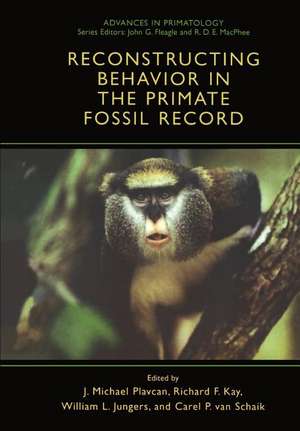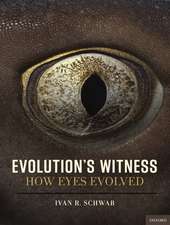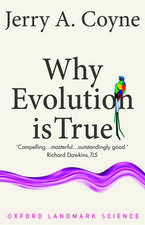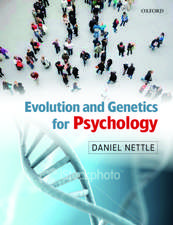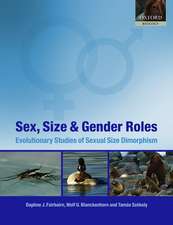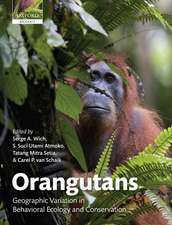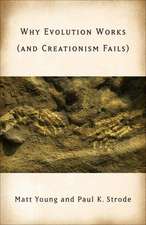Reconstructing Behavior in the Primate Fossil Record: Advances in Primatology
Editat de J. Michael Plavcan, Richard F. Kay, William L. Jungers, Carel P. van Schaiken Limba Engleză Paperback – 16 sep 2012
| Toate formatele și edițiile | Preț | Express |
|---|---|---|
| Paperback (1) | 955.08 lei 6-8 săpt. | |
| Springer Us – 16 sep 2012 | 955.08 lei 6-8 săpt. | |
| Hardback (1) | 966.45 lei 6-8 săpt. | |
| Springer Us – 30 noi 2001 | 966.45 lei 6-8 săpt. |
Preț: 955.08 lei
Preț vechi: 1164.73 lei
-18% Nou
Puncte Express: 1433
Preț estimativ în valută:
182.79€ • 190.10$ • 152.96£
182.79€ • 190.10$ • 152.96£
Carte tipărită la comandă
Livrare economică 15-29 martie
Preluare comenzi: 021 569.72.76
Specificații
ISBN-13: 9781461355076
ISBN-10: 1461355079
Pagini: 456
Ilustrații: XIII, 437 p.
Dimensiuni: 178 x 254 x 24 mm
Greutate: 0.72 kg
Ediția:2002
Editura: Springer Us
Colecția Springer
Seria Advances in Primatology
Locul publicării:New York, NY, United States
ISBN-10: 1461355079
Pagini: 456
Ilustrații: XIII, 437 p.
Dimensiuni: 178 x 254 x 24 mm
Greutate: 0.72 kg
Ediția:2002
Editura: Springer Us
Colecția Springer
Seria Advances in Primatology
Locul publicării:New York, NY, United States
Public țintă
ResearchCuprins
1 Adaptation and Behavior in the Primate Fossil Record.- Defining Adaptation.- Identifying Adaptations.- How Can Fossil Taxa Be Used to Study Adaptation?.- Summary and.- Conclusions.- References.- 2 Functional Morphology and In Vivo Bone Strain Patterns in the Craniofacial Region of Primates: Beware of Biomechnical Stories about Fossil Bones.- In Vivo Bone Strain Patterns.- Discussion.- Conclusions.- References.- 3 On the Interface between Ontogeny and Function.- Ontogeny as a Criterion of Subtraction.- Biomechanical Scaling and Functional Equivalence.- Heterochrony.- Conclusions.- References.- 4 Dental Ontogeny and Life-History Strategies: The Case of the Giant Extinct Indroids of Madagascar.- Development and the Reconstruction of the Behavior and Life Histories of Extinct Primates: Approaches and Methodologies.- Development and the Reconstruction of Behavior in Extinct Primates: An Example.- Conclusions.- References.- 5 A Comparative Approach to Reconstructing the Socioecology of Extinct Primates.- Methods.- Results.- Worked Examples.- Discussion.- Conclusions.- References.- 6 The Use of Paleocommunity and Taphonomic Studies in Reconstructing Primate Behavior.- The Comparative Method and Actualistic Studies in Paleoecology 220 Fossil Assemblages.- Community Comparisons.- Behavioral Ecology of Primates in Extant and Makapansgat Communities 242 Primate.- Interactions and Behavior Based on Accumulating Agents.- Integration of Community Comparisons.- Evolution, Taphonomy, and Community Paleoecology.- References.- 7 Reconstructing the Diets of Fossil Primates.- Adaptive Signals for Diet in Primates.- Nonadaptive Signals for Diet in Primates.- Discussion.- Summary and Conclusions.- References.- 8 Reconstructing Social Behavior from Dimorphism in the Fossil Record.- Data.- Behavioral Variables.- Relations between Dimorphism and Behavioral Estimates.- Relations between Relative Canine Size and Competition Classifications.- Relations between Dimorphism and Other.- Variables.- Summary and Conclusions.- References.- 9 The Adaptations of Branisella boliviana, the Earliest South American Monkey.- Branisella boliviana, the Earliest-Known Platyrrhine Primate.- Summary and Conclusions.- References.- 10 Ecomorphology and Behavior of Giant Extinct Lemurs from Madagascar.- Body Size and Sexual Dimorphism.- Activity Cycles.- Oral Behaviors.- Positional Behavior.- Summary.- References.- 11 Conclusions: Reconstructing Behavior in the Fossil Record.- The Comparative Approach.- Phylogeny.- Standard Error from Comparative Analyses.- Body Mass and Allometry.- Incomplete Extant Models.- Problems with Defining Behavior.- Multiple Lines of Evidence.- Conclusions.- References.
Recenzii
`The chapters are of high quality and well focused. Recommended.'
Choice, 40:4 (2002)
`One of the major challenges in primate paleontology is reconstructing the animals behaviour from its fossil remains. Unlike human archeology, where there are plenty of clues from material culture, paleontologists have much less information to work from. This book looks at the current state of the art [...] with chapters covering a broad range of techniques that can be applied and reviewing the predictions that can be made. It is firmly aimed at researchers in the field although its content might be interesting to final year undergraduates.'
Primate Eye, Primate Society of Great Britain, 81 (October 2003)
Choice, 40:4 (2002)
`One of the major challenges in primate paleontology is reconstructing the animals behaviour from its fossil remains. Unlike human archeology, where there are plenty of clues from material culture, paleontologists have much less information to work from. This book looks at the current state of the art [...] with chapters covering a broad range of techniques that can be applied and reviewing the predictions that can be made. It is firmly aimed at researchers in the field although its content might be interesting to final year undergraduates.'
Primate Eye, Primate Society of Great Britain, 81 (October 2003)
